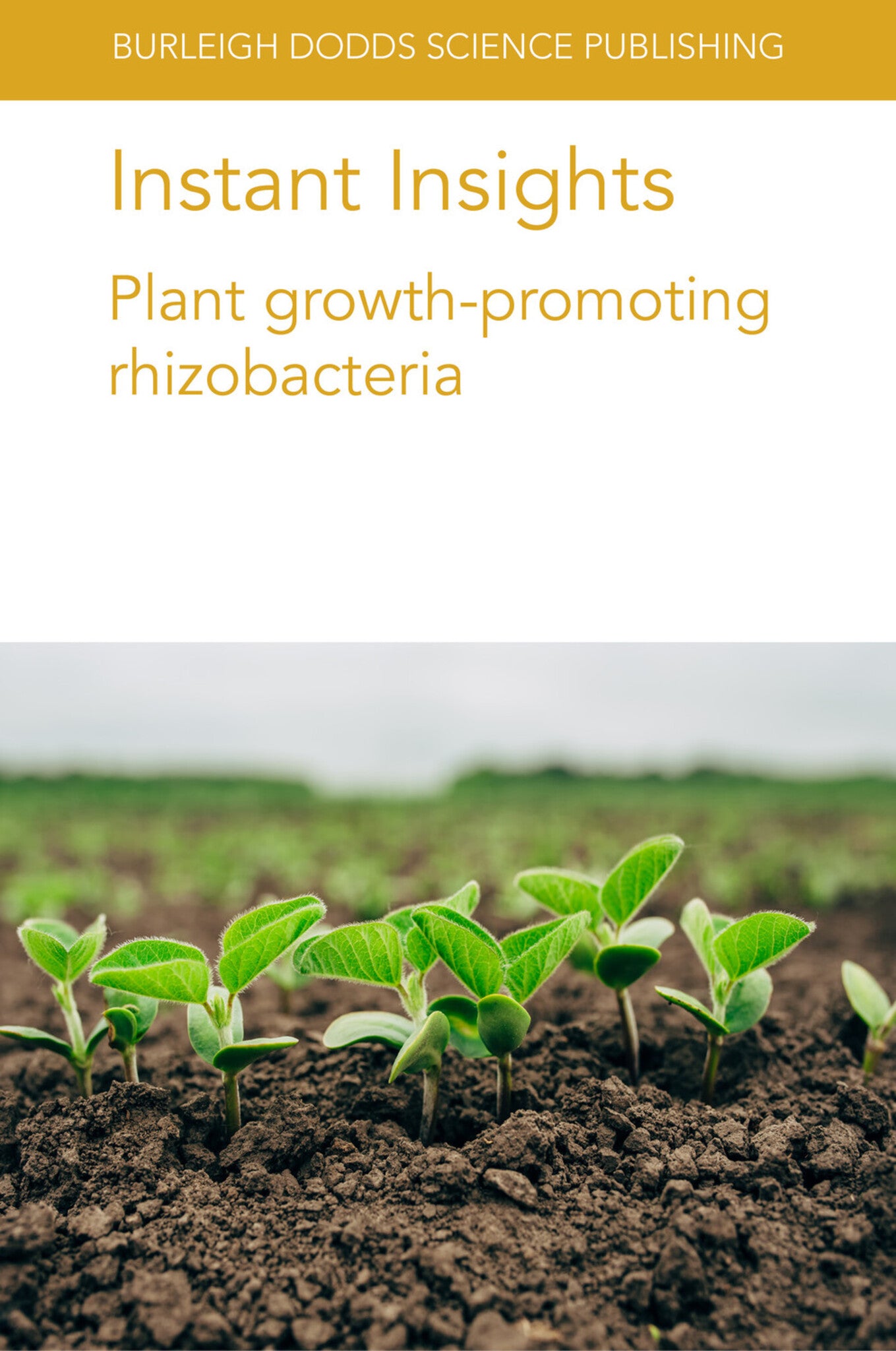We're sorry. An error has occurred
Please cancel or retry.
Instant Insights: Plant growth-promoting rhizobacteria

Some error occured while loading the Quick View. Please close the Quick View and try reloading the page.
Couldn't load pickup availability
- Format:
-
15 June 2021

This collection features four peer-reviewed literature reviews on plant growth-promoting rhizobacteria in agriculture.
The first chapter considers the use of plant growth-promoting rhizobacteria (PGPR) as plant biostimulants in agriculture. It considers the benefits of PGPR, such as their ability to promote plant growth and productivity under both normal and abiotic-stressed induced environments. The chapter also looks towards PGPR application as a sustainable and efficient method to enhance crop production.
The second chapter reviews recent research on the use of PGPR as biofertilizers to enhance root function and improve nutrient uptake, with emphasis on their effects on root architecture, metabolism and adaptation to abiotic stress.
The third chapter explores the use of microbial bio-effectors and their ability to optimise the mineral nutrition of agricultural crops. The chapter also reviews the wealth of research on the mechanism of action, applications and efficacy of key plant growth-promoting microorganisms (PGPMs).
The final chapter reviews the use of plant growth-promoting bacteria (PGPB) as a biocontrol agent against invertebrate pests. The chapter analyses the effects of PGPB species against these pest types and enlists a case study on the PGPB species Pseudomonas protegens to further demonstrate this.

TECHNOLOGY & ENGINEERING / Agriculture / Sustainable Agriculture, Agronomy and crop production, TECHNOLOGY & ENGINEERING / Agriculture / Agronomy / Crop Science, TECHNOLOGY & ENGINEERING / Pest Control, Pest control / plant diseases, Sustainable agriculture

Chapter 1 - Plant growth-promoting rhizobacteria (PGPR) as plant biostimulants in agriculture: Dongmei Lyu, Rachel Backer and Donald Smith, McGill University, Canada; 1 Introduction 2 Plant growth promotion 3 Plant growth-promoting rhizobacteria (PGPR) and abiotic stress 4 Plant growth-promoting rhizobacteria (PGPR) against biotic stress 5 Dangers of assuming the effectors or mechanisms are known 6 Conclusion and future trends 7 Where to look for further information 8 References
Chapter 2 - The use of plant growth-promoting rhizobacteria (PGPR) to improve root function and crop nutrient use efficiency: Melissa M. Larrabee and Louise M. Nelson, University of British Columbia, Canada; 1 Introduction 2 The effect of plant growth-promoting rhizobacteria on root function 3 The effect of plant growth-promoting rhizobacteria on plant mineral nutrition 4 Future trends in research 5 Conclusion 6 Where to look for further information 7 References
Chapter 3 - Bio-effectors to optimize the mineral nutrition of crop plants: Markus Weinmann and Günter Neumann, University Hohenheim, Germany; 1 Introduction 2 Defining ‘bio-effectors’ and other key terms 3 Bacillus species 4 Pseudomonas species 5 Trichoderma species 6 Arbuscular mycorrhizal fungi 7 Synergies between bio-effectors 8 Improving bio-effector functionality 9 Case study: the BioFector Project 10 Conclusions 11 Where to look for further information 12 References
Chapter 4 - Plant growth-promoting bacteria (PGPBs) as biocontrol agents against invertebrate pests: Luca Ruiu, Università degli Studi di Sassari, Italy; 1 Introduction 2 Plant growth promotion 3 Action against plant pathogens 4 Potential against invertebrate pests 5 Applications in agriculture and forestry 6 Case study: Pseudomonas protegens 7 Conclusion and future trends 8 Where to look for further information 9 References



